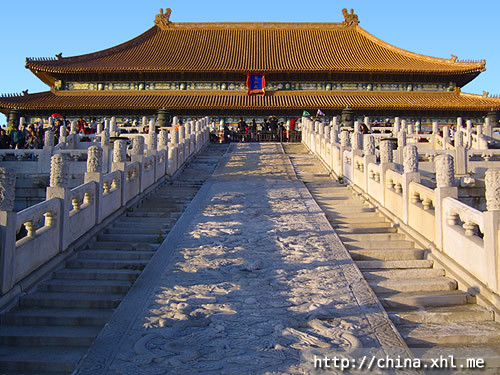Forbidden City, part 2
Written by china guide May 24th, 2010 1 Comments Category: China Destinations
The first part described main attractions in Forbidden City. The part 2 will describe the exhibition halls,the nine dragon screen, doorways, pots, sculptures, decorative tiles, roofs, beams, ceilings ,windows, gargoyles, ballustrades, walls and other places of interest.
The Exhibition Halls(Chinese: 展览馆)
Some of the buildings in the forbidden city with more minor original functions have been internally converted to hold permanent, but sometimes changing, exhibitions of artefacts of various types - including clocks, ceramics, paintings and bronzes. But first, a little background.
The Imperial Studios(Chinese: 工艺美术馆)
The emperors of China retained artists and craftsmen to manufacture works of the highest quality both to please their senses and add weight to their claim of legitimacy. Under the Qing dynasty, imperial porcelain makers from JingDeZhen introduced new glazes, shapes and techniques. The imperial studios produced paintings with traditional themes such as portraiture, landscapes, birds and flowers, and religious subjects, as well as detailed representations of political ceremonies, military conquests, and imperial processions.
Unlike earlier dynasties, the Qing court also employed Jesuit artists from Europe, whose introduction of western painting techniques and aesthetics stamped the academy as a whole with a unique visual flavor.
Religious Art(Chinese: 宗教艺术)
The Qing emperors retained their sacred Manchurian traditions, performing shamanistic rituals within the seclusion of the Forbidden City. In addition, they became ardent supporters of tantric Buddhism, imported from Tibet and Mongolia. Tibetan monks, stationed at the Hall of Uprightness, were employed as artists to produce religious objects for the emperor.
Tags: Beijing, Forbidden City, Palace Museum
